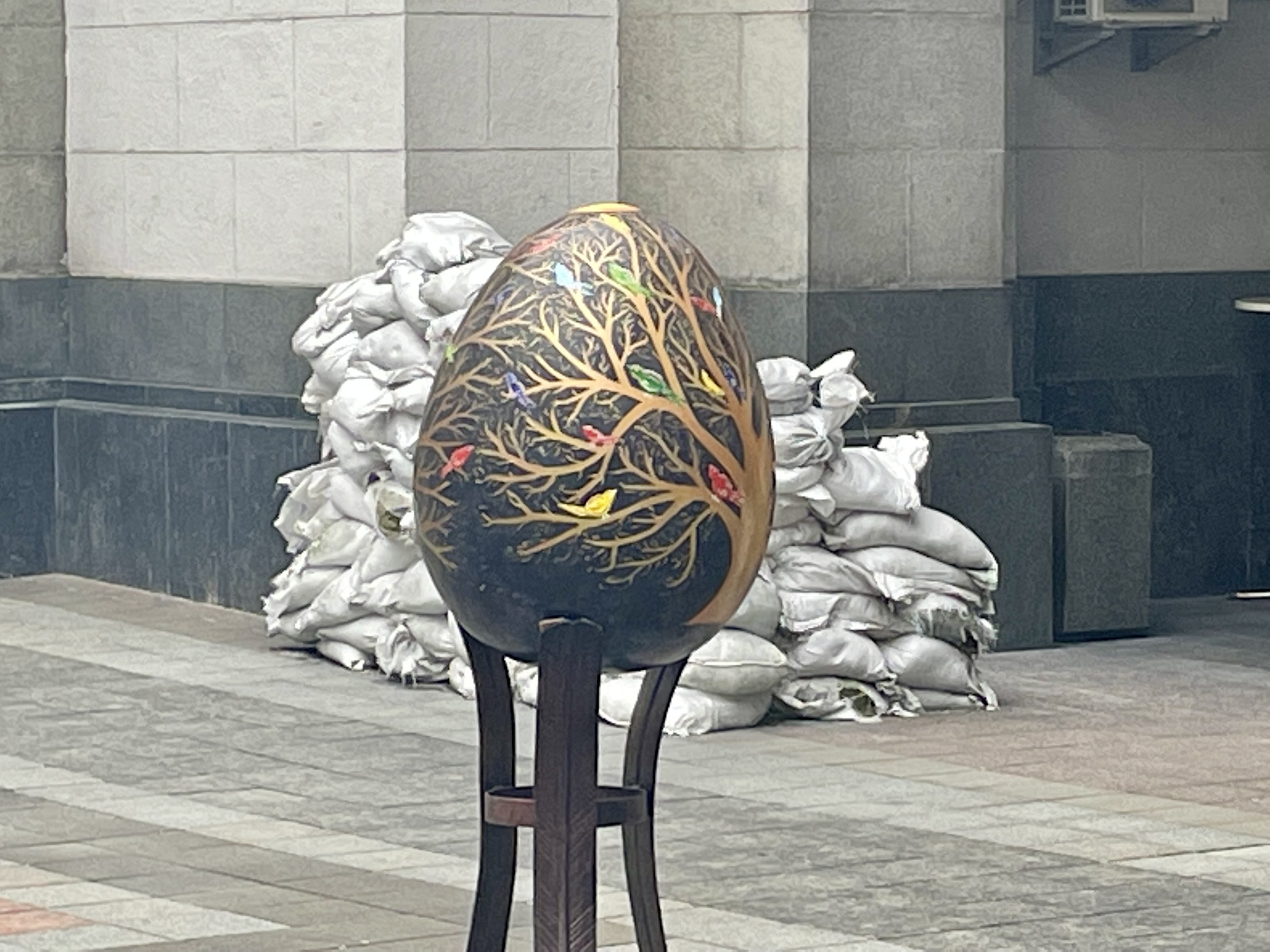A selection of hand-painted, giant-sized traditional Ukrainian Easter eggs – known as ‘pysanky’ – are on display in the main court yard of Ukraine’s parliament, the Verkhovna Rada.
The displayed works of art are from those that survived the destruction of Dobropark in the Makariv region of outer Kyiv during the Russian occupation last year. Of the 585 original works of art, only 140 now remain, including those on display at the Rada building.
JOIN US ON TELEGRAM
Follow our coverage of the war on the @Kyivpost_official.
The displayed pysanky represent different themes including peace, gender equity, and ecological conservation.
The Ukrainian name for Easter eggs—pysanka in the singular and pysanky as plural—is derived from the Ukrainian verb pysaty, which means “to write”. Hence, the word refers to the writing on the eggs.

Ukrainian Easter eggs often feature complex geometric and floral designs that are highly symbolic and, very often, tie back to pre-Christian paganism in Ukraine.
Sofika Zielyk, a renown New York City-based ethnographer and pysanka artist, recently told Time that one of these stories says that the ritual is meant to represent the return of sunshine after a long winter, and eggs are used because the yellow yolk is thought to resemble the sun. Another pre-Christian legend tells the story of a monster, the personification of evil, in the Carpathian mountains; in that story, the more pysanky people make, the tighter the chains are wrapped around the monster, keeping it at bay so that it doesn’t destroy the world.
Zielyk, who curated a recent exhibit of pysanky at the Ukrainian Institute of America in New York City, told Time that this story of the monster inspired that show. She envisioned Russian President Vladimir Putin as the monster in this case, and the large number of accumulated pysanky symbolizes reining him in.
In Christianity, eggs are a common symbol of the resurrection of Christ. Traditional designs on the eggs are also imbued with meaning. Per Christian tradition, triangles on eggs represents the Holy Trinity. Different regions of Ukraine decorate eggs in different ways. For example, the pysanky in Western Ukraine boast drawings of chicks to represent fertility and deer to represent strength and prosperity.
The pysanka tradition wasn’t widely practiced in Ukraine when the country was under Soviet rule from World War II until 1991, when Ukraine regained its independence.
“Ever since Ukraine regained independence, there has been a rebirth of this tradition in Ukraine,” said Zielyk.
You can also highlight the text and press Ctrl + Enter





